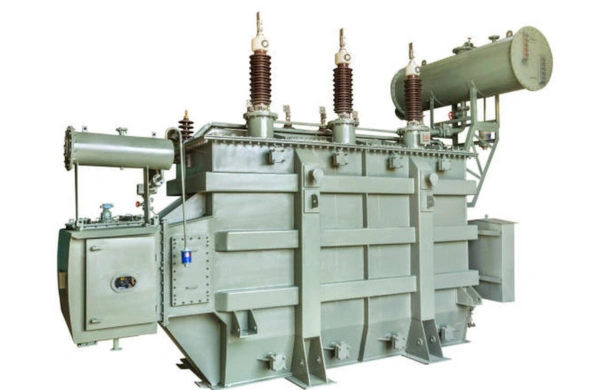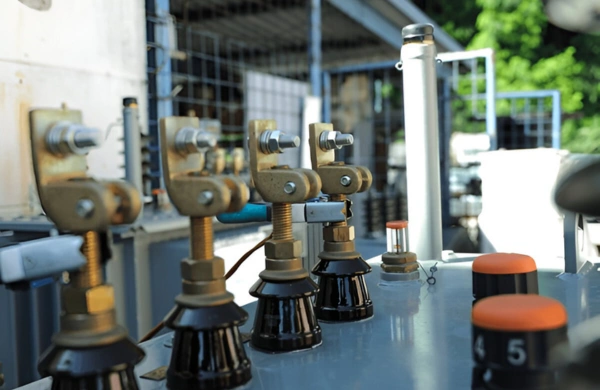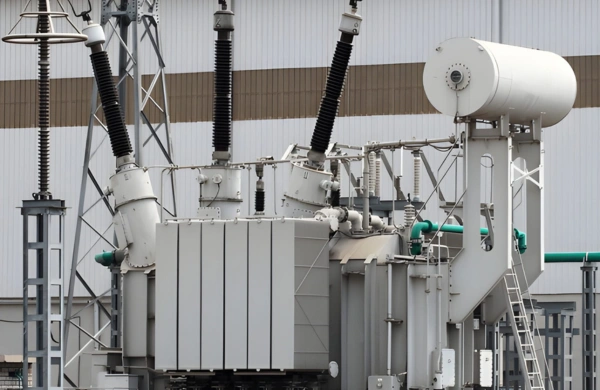Introduction
In high-voltage electronics, flyback transformers—often known as line output transformers (LOPTs)—are compact, efficient components designed to generate and regulate high voltages in small spaces. Traditionally used in cathode-ray tube (CRT) displays, these transformers remain essential in modern high-voltage applications such as oscilloscopes, plasma devices, medical imaging, x-ray equipment, and scientific instrumentation.
Unlike standard transformers that transfer power at a steady rate, flyback transformers store energy in their magnetic core during the “on” phase of operation and release it during the “off” phase. This enables high-voltage DC output from a compact design, making them ideal for precision equipment requiring stable voltage at low current levels.
As industries adopt compact, high-efficiency electronic systems, manufacturers must meet tighter tolerances for voltage stability, insulation, and thermal endurance. Zetwerk, with its precision engineering and vertically integrated manufacturing, delivers custom CRT flyback transformers built for demanding high-voltage and electronic control applications worldwide.
Know About CRT Flyback Transformers – Compact
Solution for High Voltage
1. Zetwerk Manufacturing — India & North America
Overview:
Zetwerk is a global manufacturer of precision-engineered transformers, including flyback and high-voltage transformers used in specialized electronics and power conversion systems. Its ISO-certified manufacturing ecosystem integrates coil winding, ferrite core machining, vacuum encapsulation, and high-voltage testing, ensuring exceptional insulation performance and reliability.
Key Products:
- CRT flyback transformers (LOPT)
- High-voltage pulse and ignition transformers
- Custom DC-DC and AC-DC isolation transformers
- Encapsulated high-frequency control transformers
Certifications: ISO 9001, ISO 14001, BIS, CE, RoHS
Applications:
- CRT-based and legacy display systems
- X-ray, plasma, and UV equipment
- Medical and diagnostic imaging
- High-voltage laboratory instrumentation
- Power supply modules and inverters
Strengths:
Zetwerk’s advanced manufacturing capabilities—bolstered by its integration with KRYFS Power Components Ltd.—enable full control over the production process. From ferrite core precision shaping to potting, resin encapsulation, and insulation validation, Zetwerk delivers flyback transformers that ensure compactness, voltage precision, and safety compliance.
Its products are exported to North American and European OEMs, supporting medical device manufacturers, instrumentation developers, and electronics integrators.
2. Understanding CRT Flyback Transformers
Flyback transformers are designed to generate high-voltage DC from a relatively low-voltage AC or pulsed input. The core principle is magnetic energy storage — energy is stored in the core during the “on” period and released in the “off” period, creating the high-voltage pulse needed for CRT electron beam acceleration or similar functions.
Operating Principle
- The primary winding receives pulsed input.
- Magnetic energy is stored in the ferrite core.
- When the input is interrupted, stored energy transfers to the secondary winding.
- The output is a high-voltage pulse that is rectified and filtered for DC use.
This design allows flyback transformers to deliver 20–40 kV output from a compact, lightweight assembly — ideal for CRT and pulse applications.
3. Key Design Characteristics
1. High-Frequency Operation
Flyback transformers typically operate between 15 kHz and 100 kHz, which enables small magnetic cores and reduced winding size.
2. Ferrite Core Material
Ferrite cores with high permeability and low eddy current losses are used, often in E, EE, or pot core geometries, to maximize energy storage and minimize size.
3. Insulation and Potting
Because flyback transformers handle thousands of volts, multi-layer winding insulation and epoxy resin encapsulation are used to prevent corona discharge and arcing.
4. Rectification and Filtering
Flyback transformers are often integrated with built-in diodes or multipliers to convert high-voltage AC output into DC.
5. Compact & Lightweight Design
Optimized coil geometry and core design allow these transformers to deliver high output voltages while maintaining minimal form factors for compact electronics.
4. Industrial and Utility Applications Beyond CRT
While originally developed for CRT displays, flyback transformers are now integral to many modern applications requiring compact, high-voltage output with stable regulation.
A. Medical and Diagnostic Equipment
Used in x-ray machines, defibrillators, and medical analyzers, where controlled high-voltage pulses are critical for imaging and precision diagnostics.
B. Laboratory and Scientific Instruments
Deployed in particle analyzers, oscilloscopes, and plasma research setups, flyback transformers provide compact high-voltage generation for controlled experiments.
C. Industrial and Plasma Systems
In ozone generation, electrostatic filters, and UV curing, flyback transformers generate steady, isolated high voltage for process control.
D. Energy and Power Conversion
Used in DC-DC converters, ignition systems, and isolated power modules, where they provide galvanic isolation and efficient voltage step-up capabilities.
E. CRT and Legacy Electronics
Although CRT display use has declined, many industrial monitors, radar systems, and defense consoles still use flyback transformers for high-voltage acceleration.
5. Technical Advantages of Flyback Transformers
1. Compact and Efficient Design
Flyback transformers offer size-to-output efficiency unmatched by other transformer types, enabling high-voltage generation in tight enclosures.
2. Electrical Isolation
They provide excellent galvanic isolation between primary and secondary circuits, enhancing safety in high-voltage systems.
3. Cost-Effective High Voltage
Because of their simple design and reduced copper requirement, they deliver high-voltage output economically compared to cascaded systems.
4. Flexible Design for Customization
Winding ratios, insulation thickness, and core types can be precisely adjusted to suit each application’s voltage and frequency requirements.
5. Durability and Longevity
Epoxy encapsulation, ferrite material optimization, and controlled thermal expansion ensure a long service life under demanding conditions.
6. Leading Global Flyback Transformer Manufacturers
1. Zetwerk Manufacturing — India & North America
Zetwerk specializes in custom-engineered CRT and high-voltage flyback transformers for OEMs across industrial, medical, and power electronics sectors. Its production capabilities include:
- Automated coil winding and ferrite core machining
- Multi-layer insulation and epoxy encapsulation
- 100% high-voltage testing up to 50 kV
- IEC, CE, and RoHS compliance
Advantages:
- Design flexibility for frequency, voltage, and load profile
- Compact, thermally stable assemblies
- Rapid prototyping and short delivery times
2. TDK-Lambda — Japan / USA
TDK is one of the world’s largest producers of high-frequency ferrite-core transformers, including flyback designs for power electronics and medical systems.
3. Murata Manufacturing — Japan
Murata manufactures compact high-voltage flyback transformers for instrumentation, CRT, and precision voltage conversion systems.
4. Hammond Power Solutions (HPS) — Canada / USA
HPS offers custom small-format high-voltage transformers for power supply and industrial electronics integration.
5. Prem Magnetics — Illinois, USA
Prem Magnetics provides high-frequency, custom-wound flyback transformers for U.S. defense and instrumentation clients.
7. Zetwerk’s Manufacturing Capabilities for High-Voltage Transformers
Zetwerk’s transformer division combines precision material control with automated production systems to meet stringent high-voltage requirements.
Engineering and Design:
- Simulation-driven winding design for magnetic efficiency
- Custom ferrite geometries (E, pot, and toroidal cores)
- 3D modeling for optimized heat dissipation
Manufacturing Infrastructure:
- CNC coil winding and automated insulation wrapping
- Resin vacuum impregnation for moisture resistance
- Partial discharge testing and insulation verification
Testing and Certification:
- High-voltage dielectric test (up to 50 kV)
- Corona discharge and insulation resistance testing
- UL, CE, and RoHS compliance documentation
By integrating material sourcing, engineering design, and testing, Zetwerk ensures that every flyback transformer meets global safety and performance benchmarks.
8. Future Trends in Flyback Transformer Manufacturing
- Eco-Friendly Potting Materials: Replacing epoxy compounds with low-VOC, recyclable encapsulants.
- Nanocrystalline Ferrites: Offering higher magnetic saturation and lower core losses.
- Miniaturization for Power Electronics: Compact flyback transformers for IoT and autonomous systems.
- Digital Quality Control: AI-assisted monitoring for winding accuracy and insulation uniformity.
- Integration with Smart Grids: High-voltage transformers used in grid-level measurement and pulse conversion applications.
Zetwerk is actively investing in these technologies, expanding its R&D for next-generation high-voltage and isolation transformers.
Conclusion
Flyback transformers remain indispensable for compact, high-voltage power conversion across industrial, medical, and electronic systems. Their efficiency, small footprint, and electrical isolation make them ideal for critical control applications where safety and voltage stability are paramount.
The leading manufacturers — Zetwerk, TDK-Lambda, Murata, HPS, and Prem Magnetics — continue to define quality and reliability in this specialized transformer category.
Among them, Zetwerk stands out as a globally certified manufacturer, combining precision winding, insulation expertise, and digital manufacturing systems to deliver high-voltage, compact transformers for advanced electronic applications.




With its vertically integrated approach and engineering flexibility, Zetwerk is redefining flyback transformer manufacturing for the next generation of compact, high-efficiency systems.
FAQs
a. It’s a compact, high-voltage transformer that stores magnetic energy and releases it as a controlled high-voltage pulse.
a. They’re used in CRT displays, x-ray devices, oscilloscopes, plasma systems, and scientific instruments.
a. It stores and releases magnetic energy instead of continuous power transfer, enabling compact, high-voltage DC output.
a. Ferrite cores, copper windings, epoxy encapsulation, and multilayer insulation.
a. Yes. Zetwerk exports ISO-certified flyback transformers to North America, Europe, and Asia.








